Meet Ojai's queen of hip motels
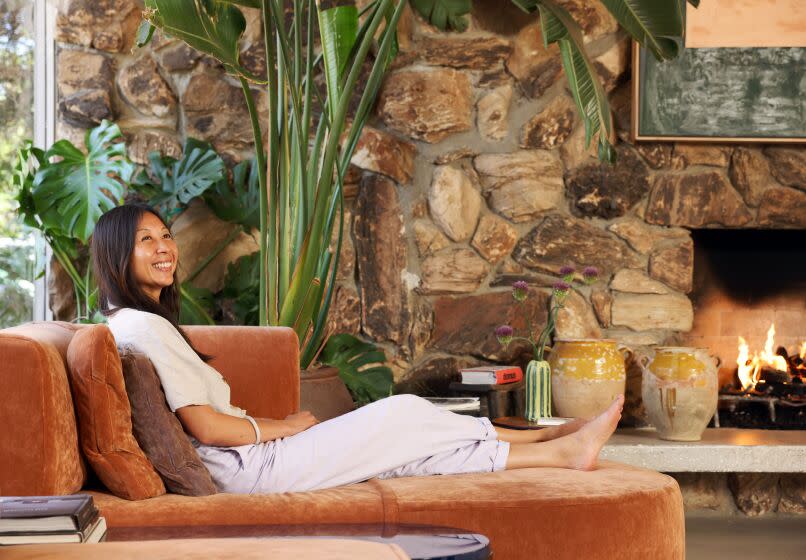
What is the difference between a tired old motel and a boutique hotel with a devout following and loads of modern charm?
Apparently it's Kenny Osehan. She is a hotel "preservationist" who runs two of Ojai’s most Instagrammed lodgings, the Capri Hotel and the Ojai Rancho Inn, through her company Shelter Social Club.
Both properties are Midcentury motels that once aimed to house families with tight budgets. Now, renovated to emphasize their history while bringing forth a new boho-chic aesthetic, they lure design-seeking millennials who are ready to pay $250 or more per night.
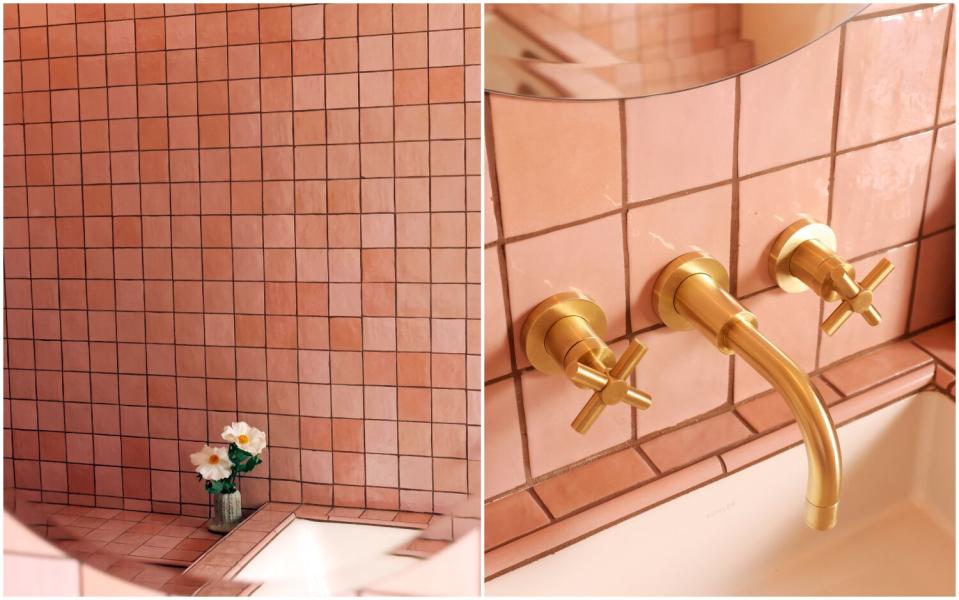
“It’s all about how you feel when you set foot on a property," Osehan said, sitting on the shaded patio of the Capri Hotel. "You want to feel the personality of the place.”
The Capri is a souped-up 1963 property with 30 guest rooms, a pool, whirlpool and grassy area often used for lolling and special events, and a Mediterranean-style rock wall dominating the lobby. As recently as 2017, with different paint and furnishings, Osehan said, guest rooms were going for as little as $80. Now, with an overlay of Italian design and paintings by Mattea Perrotta and other artists, they fetch $300 to $490 nightly.
The Ojai Rancho Inn, built in 1950 and redone from 2012 to 2015, is a 17-room property with a more woodsy, rustic vibe. With its rooms wrapped around a parking lot and a location facing the busiest street in town, the inn is a motel in its bones. Yet Osehan has recast it as “a summer camp for adults.”
The poolside Chief's Peak bar, added in 2014, is a tiny but popular gathering spot. One wall is an array of mugs in earthy hues by Kat & Roger. There are ceramic lamps by Heather Levine, paintings by Carly Jo Carson and barstools and patio chairs by Eric Trine. The guest room rates start around $260 (free parking, no resort fees) and they book up fast.
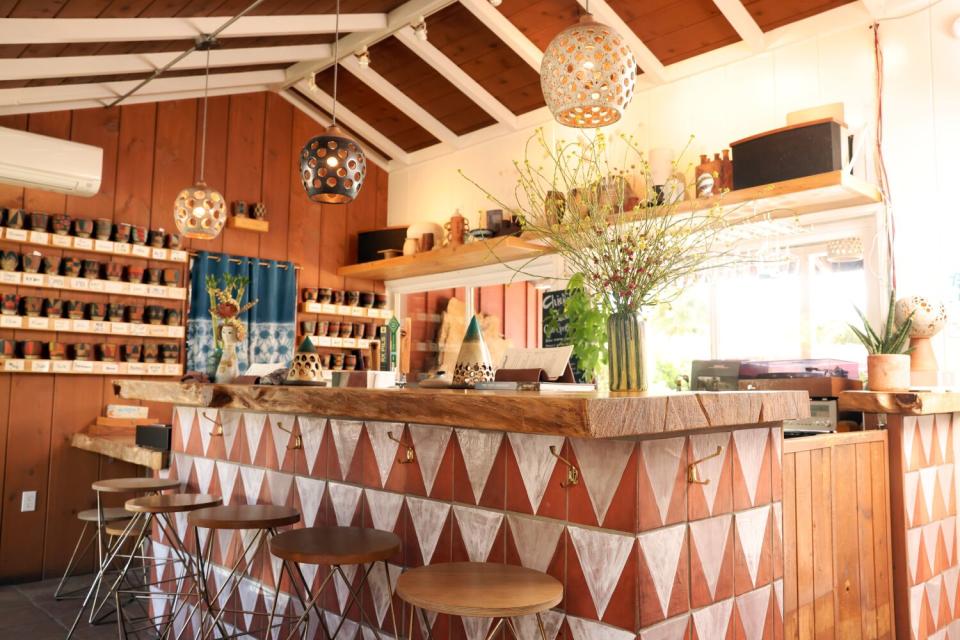
As Osehan acknowledges, part of this success is the rising popularity of Ojai as a destination.
But another part is that mysterious thing called style. Osehan says her approach springs straight from her childhood.
Osehan’s family emigrated from Indonesia when she was an infant and managed a budget motel in Santa Barbara called the Travelers.
“We moved in when I was 9,” she recalled. “We lived in the manager’s unit. One bedroom, four of us.” Through her teen years, Osehan and her sister, Jessy, did what needed doing around the motel, from cleaning to working the front desk. By the time she’d moved to the UC Santa Barbara dorms and started studying sociology and art history, “I definitely didn’t want to be in the hotel business. But when it’s in your blood, it’s what you know.”
Sure enough, after college, when she and a partner were looking to “bring a creative community together,” the opportunity they found was a tired motel.
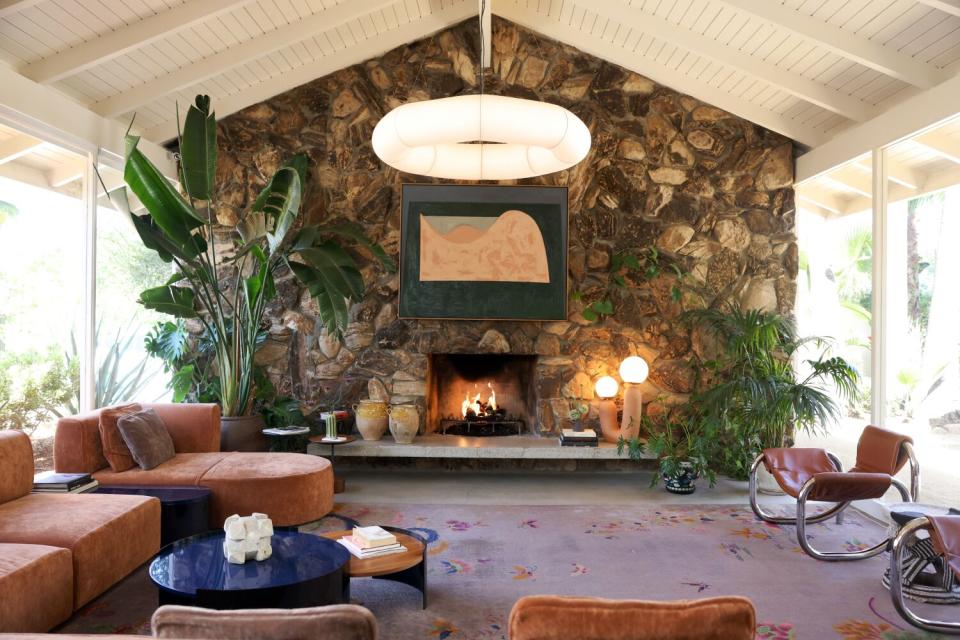
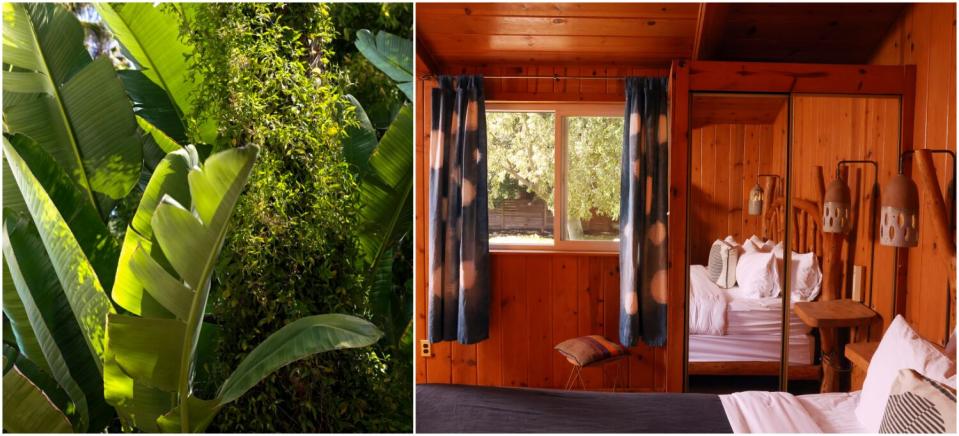
Given a chance to take over the lease on the Presidio Motel in Santa Barbara, they jumped, planning “to have art shows and bands playing, to kind of have a venue that still has a sustainable income stream.”
Among the early challenges: “mushrooms growing out of the wallpaper” and a rough-and-tumble clientele. At first, “We were calling the cops on guests a couple of times a week,” she said.
But they made progress, extended the lease, bought new furniture at Ikea and recruited artists to decorate rooms. In striving “to create an experience rather than just a place to sleep,” they'd found a niche in the area's competitive lodging market.
By the end of 2012, Osehan and her partner had left the Presidio behind, created Shelter Social Club and come across the “really good energy” at the Ojai Rancho Inn. They left a note for the owner, Steve Edelson, a longtime owner of L.A. nightclubs who also owns the Capri and Hummingbird buildings in Ojai. Soon they had a long-term lease.
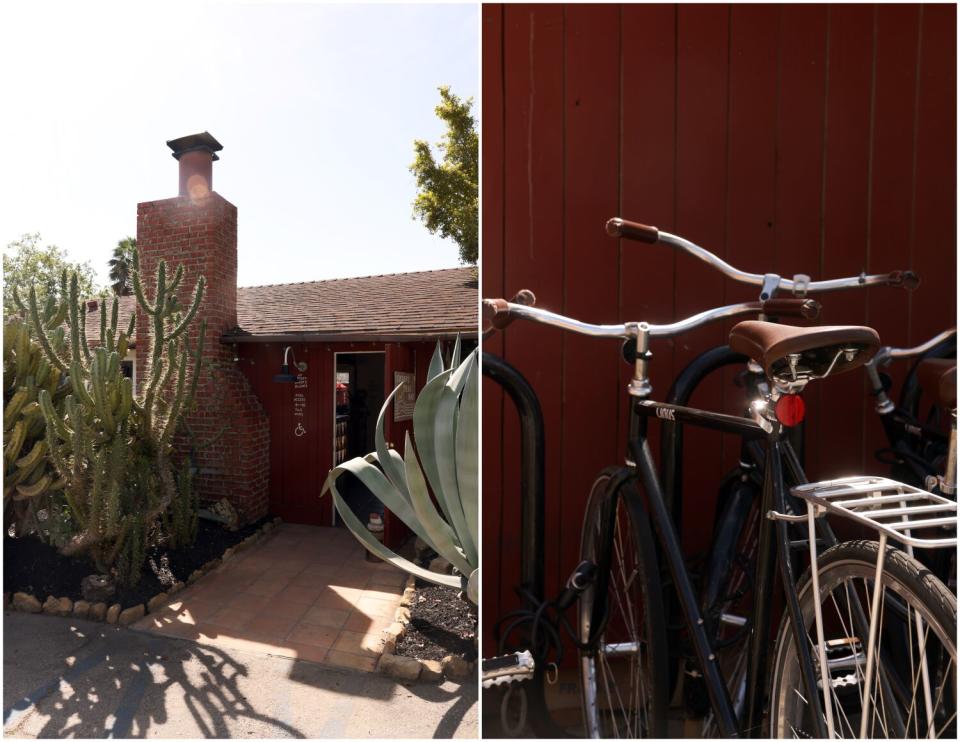
A decade later, the Shelter Social Club group includes the two Ojai properties; the Alamo Inn and Bar Alamos in Los Alamos; Santa Barbara’s Agave Inn (formerly the Travelers), where Osehan’s aunt Wendy Simorangkir is partner; Solvang’s Hamlet Inn (managed by Osehan’s sister, Jessy Verkler); and Santa Barbara’s Sama Sama Kitchen (run by Osehan’s cousin, Ryan Simorangkir). In 2018, Osehan bought out her partner.
Osehan, 42, finished the Capri renovation just in time for the pandemic. She has made it through, she said, with help from federal small-business loans, an understanding landlord and several long-term tenants.
Osehan’s third Ojai property, not yet flying the Shelter Social Club flag, is the 31-room Hummingbird Inn. It was built in the 1970s or ’80s — Osehan isn’t sure — in workaday Spanish colonial style. It remains open as renovations advance slowly.
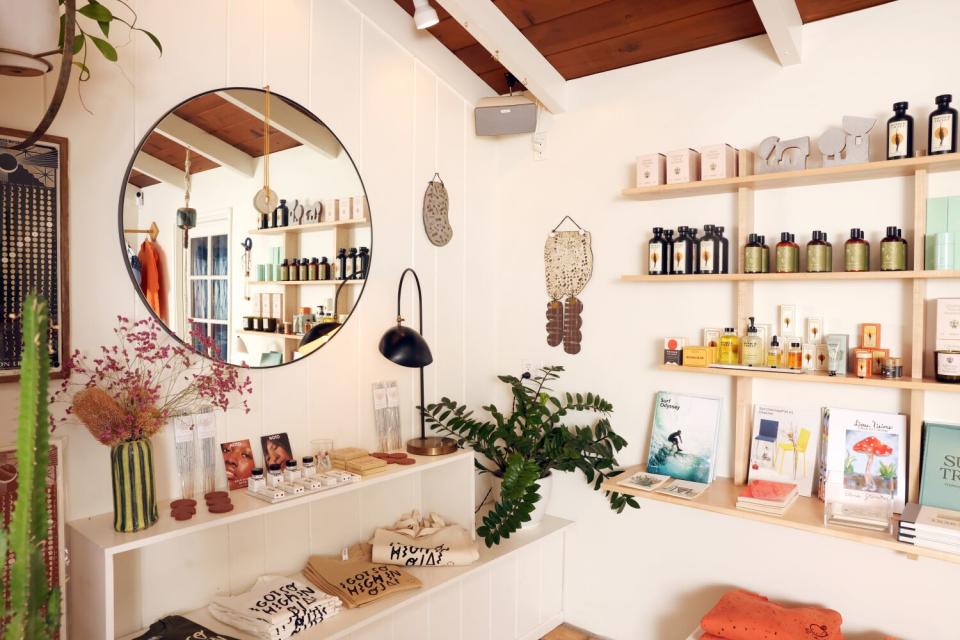
When she’s looking at any hotel property, Osehan said, she’s hoping for a space that feels intentional — “and when the attention to detail is executed so well that you can't see it but you feel it.” She scorns bright lights, intrusive music and renovations that disrespect the first designer’s intentions.
As a latecomer to a property, she said, “You don’t want to honor a laminate floor that was put in as a bad decision and wasn’t part of the original architecture.”
The lobby shops at both hotels (and at the Alamo) are curated by Eskina Space to include such inventory as coffee table books on surfing, shapely bottles of Wonder Valley Olive Oil and packages of Dad Grass (five prerolled CBD joints, “low dose, full toke, like your parents used to smoke”).
Wherever she’s working, Osehan said, “I want to be sure that it doesn’t feel pretentious in any way. I never want something to feel too precious.”
This is especially true in Ojai, she said, because of the community’s laid-back reputation.
“Coming to Ojai is about getting away from feeling like you need to be doing something,” Osehan said.
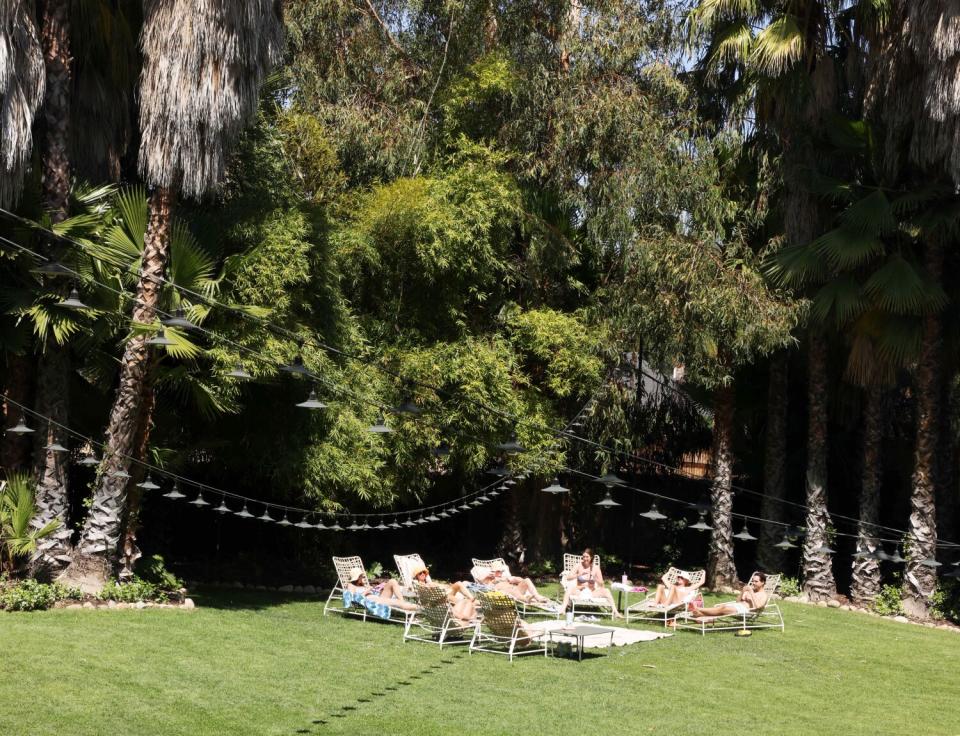
This story originally appeared in Los Angeles Times.

